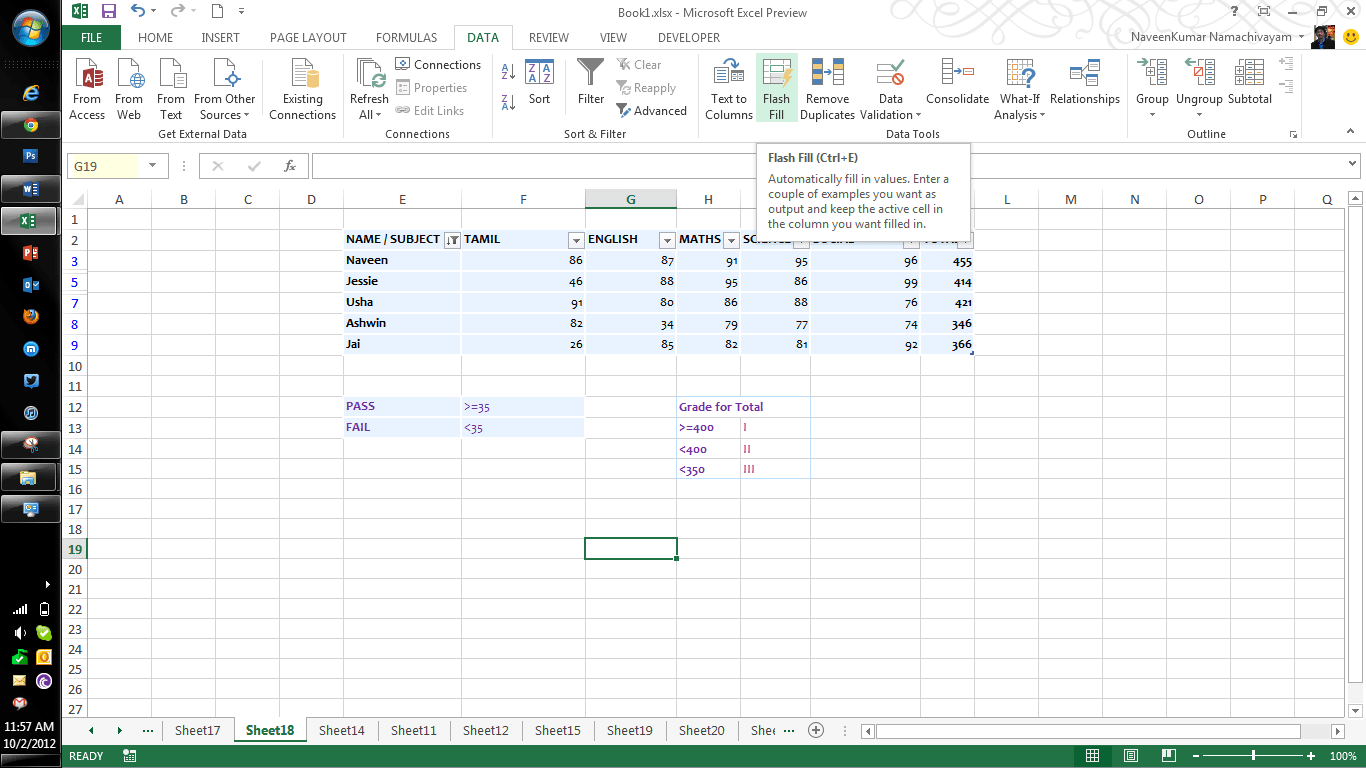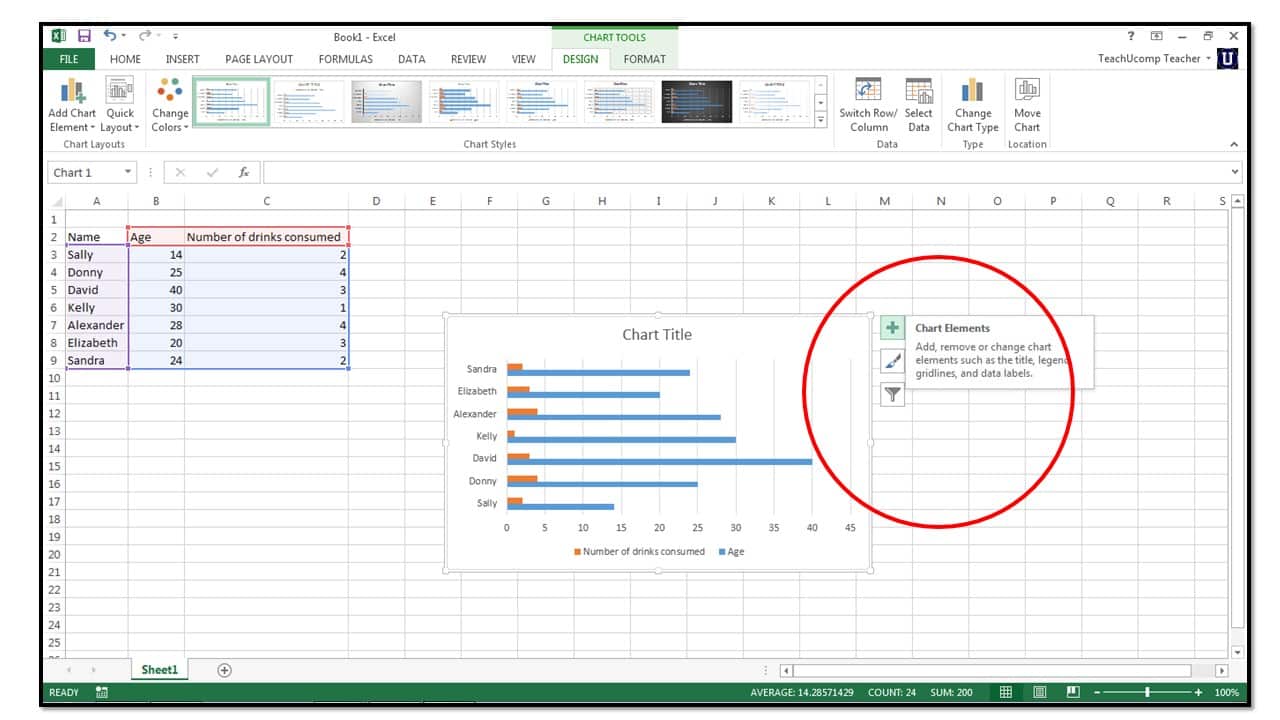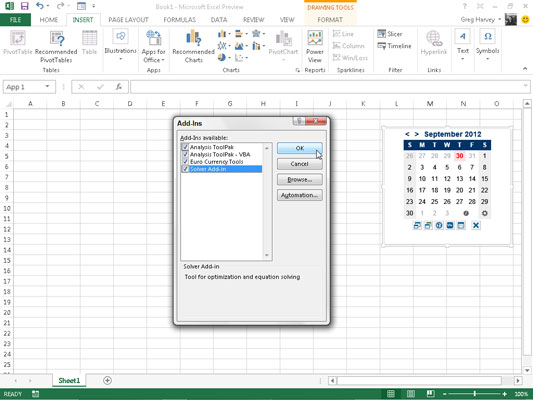You can access the VBA environment in Excel 2013 by opening the Microsoft Visual Basic for Applications window. First, be sure that the DEVELOPER tab is visible in the toolbar in Excel. The DEVELOPER tab is the toolbar that has the buttons to open the VBA editor and create Form/ActiveX Controls like buttons, checkboxes, etc. Microsoft Excel 2013 is designed to help you get professional-looking results with features that let you get away from walls of numbers and draw more persuasive pictures of your data, guiding you. Microsoft Excel is the industry leading spreadsheet software program, a powerful data visualization and analysis tool. Take your analytics to the next level with Excel.
Home > Sample chapters > Microsoft Office > Excel
- 3/31/2014
- Creating charts
Chapter at a glance
Charts

Customizing the appearance of charts
Trendlines
Finding trends in your data
Diagrams
Creating diagrams by using SmartArt
Shapes
IN THIS CHAPTER, YOU WILL LEARN HOW TO
Creating charts.
Customizing the appearance of charts.
Finding trends in your data.
Creating dual-axis charts.
Summarizing your data by using sparklines.
Creating diagrams by using SmartArt.
Creating shapes and mathematical equations.


When you enter data into a Microsoft Excel 2013 worksheet, you create a record of important events, whether they are individual sales, sales for an hour of a day, or the price of a product. However, a list of values in cells can’t communicate easily the overall trends in the data. The best way to communicate trends in a large collection of data is by creating a chart, which summarizes data visually. In addition to the standard charts, with Excel 2013, you can create compact charts called sparklines, which summarize a data series by using a graph contained within a single cell.
You have a great deal of control over your charts’ appearance—you can change the color of any chart element, choose a different chart type to better summarize the underlying data, and change the display properties of text and numbers in a chart. If the data in the worksheet used to create a chart represents a progression through time, such as sales over several months, you can have Excel extrapolate future sales and add a trendline to the graph that represents that prediction.
In this chapter, you’ll create a chart and customize its elements, find trends in your data, create a dual-axis chart, summarize data by using sparklines, create diagrams by using SmartArt, and create shapes that contain mathematical equations.
Creating charts

With Excel 2013, you can create charts quickly by using the Quick Analysis Lens, which displays recommended charts to summarize your data. To display recommended charts, select the entire data range you want to chart, click the Quick Analysis button, and then click Charts to display the types of charts that Excel recommends.
You can display a live preview of each recommended chart by pointing to the icon that represents that chart. Clicking the icon adds the chart to your worksheet.
If the chart you want to create doesn’t appear in the Recommended Charts gallery, select the data that you want to summarize visually and then, on the Insert tab, in the Charts group, click the type of chart that you want to create to have Excel display the available chart subtypes. When you point to a subtype, Excel displays a live preview of what the chart will look like if you click that subtype.
When you click a chart subtype, Excel creates the chart by using the default layout and color scheme defined in your workbook’s theme.
If Excel doesn’t plot your data the way that you want it to appear, you can change the axis on which Excel plots a data column. The most common reason for incorrect data plotting is that the column to be plotted on the horizontal axis contains numerical data instead of textual data. For example, if your data includes a Year column and a Maintenance column, instead of plotting maintenance data for each consecutive year along the horizontal axis, Excel plots both of those columns in the body of the chart and creates a sequential series to provide values for the horizontal axis.
You can change which data Excel applies to the vertical axis (also known as the y-axis) and the horizontal axis (also known as the x-axis). To make that change, select the chart and then, on the Design tab, in the Data group, click Select Data to open the Select Data Source dialog box.
As shown in the preceding graphic, the Year column doesn’t belong in the Legend Entries (Series) pane, which corresponds to a column chart’s vertical axis. To remove a column from an axis, select the column’s name, and then click Remove. To add the column to the Horizontal (Category) Axis Labels pane, click that pane’s Edit button to display the Axis Labels dialog box, which you can use to select a range of cells on a worksheet to provide values for an axis.
In the Axis Labels dialog box, click the Collapse Dialog button at the right edge of the Axis Label Range field, select the cells to provide the values for the horizontal axis (not including the column header, if any), click the Expand Dialog button, and then click OK. Click OK again to close the Select Data Source dialog box and revise your chart.
After you create your chart, you can change its size to reflect whether the chart should dominate its worksheet or take on a role as another informative element on the worksheet. For example, Gary Schare, the chief executive officer of Consolidated Messenger, could create a workbook that summarizes the performance of each of his company’s business units. In that case, he would display the chart and data for each business unit on the same worksheet, so he would want to make his charts small.
To resize a chart, select the chart, and then drag one of the handles on the chart’s edges. By using the handles in the middle of the edges, you can resize the chart in one direction. When you drag a handle on the left or right edge, the chart gets narrower or wider, whereas when you drag the handles on the chart’s top and bottom edges, the chart gets shorter or taller. You can drag a corner handle to change the chart’s height and width at the same time; and you can hold down the Shift key as you drag the corner handle to change the chart’s size without changing its proportions.
Just as you can control a chart’s size, you can also control its location. To move a chart within a worksheet, drag the chart to the desired location. If you want to move the chart to a new worksheet, click the chart and then, on the Design tool tab, in the Location group, click Move Chart to open the Move Chart dialog box.
To move the chart to a new chart sheet, click New Sheet and enter the new sheet’s name in the accompanying field. Clicking New Sheet creates a chart sheet that contains only your chart. You can still resize the chart on that sheet, but when Excel creates the new chart sheet, the chart takes up the full sheet.
To move the chart to an existing worksheet, click Object In and then, in the Object In list, click the worksheet to which you want to move the chart.
In this exercise, you’ll create a chart, change how the chart plots your data, move your chart within a worksheet, and move your chart to its own chart sheet.
On the Data worksheet, click any cell in the Excel table, and then press Ctrl+* to select the entire table.
In the lower-right corner of the Excel table, click the Quick Analysis button to display tools available in the Quick Analysis gallery.
Click the Charts tab to display the available chart types.
Click Line to create the recommended line chart.
Press Ctrl+Z to undo the last action and remove the chart from your worksheet.
On the Insert tab, in the Charts group, click Bar and then, in the 2D Bar group, click the first chart subtype, Clustered Bar. Excel creates the chart, with both the Year and Volume data series plotted in the body of the chart.
On the Design tab, in the Data group, click Select Data to open the Select Data Source dialog box.
In the Legend Entries (Series) area, click Year.
Click Remove to delete the Year series.
In the Horizontal (Category) Axis Labels area, click Edit to open the Axis Labels dialog box.
Select cells A3:A9, and then click OK. The Axis Labels dialog box closes, and the Select Data Source dialog box reappears with the years in the Horizontal (Category)Axis Labels area.
Click OK. Excel redraws your chart, using the years as the values for the horizontal axis.
Point to (don’t click) the body of the chart, and when the pointer changes to a four-headed arrow drag the chart up and to the left so that it covers the Excel table.
On the Design tab, in the Location group, click Move Chart to open the Move Chart dialog box.
Click New sheet, enter Volume Chart in the sheet name box, and then click OK. Your chart appears on a chart sheet named Volume Chart.
This chapter is from the book

Related resources
- By Chris Sorensen, Ammul Shergill
- Online video $299.99
2013 Excel
- By Joan Lambert
- Book $24.99
- By Paul McFedries
- Book $24.99
77-427: Microsoft Excel 2013 Expert Part One
Languages: en zh-cn zh-tw de es fr it ja ko nl pt-br ru ar-sa
Excel 2013 Training Manual Pdf
Retirement date:
Expert-level candidates for the Excel 2013 exam should have an advanced understanding of the Excel environment and the ability to guide others in the proper use of features in Excel 2013 of Office Professional Plus.
Price based on the country in which the exam is proctored.
2013 Excel Training Videos
for Microsoft Excel 2013 Expert Part One2013 Excel Tutorials For Beginners
All objectives of the exam are covered in depth so you'll be ready for any question on the exam.
